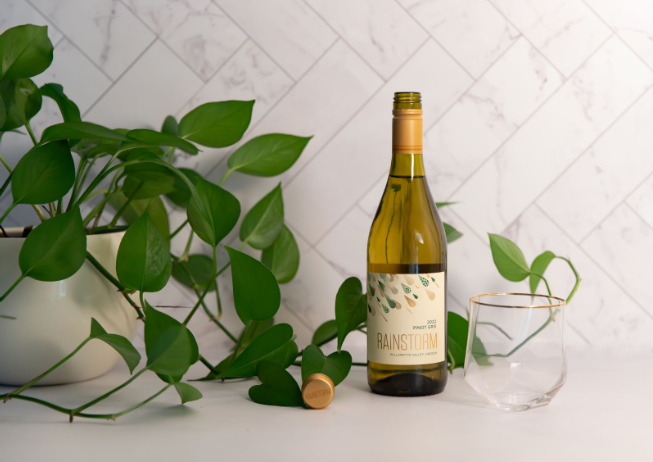Wine Wednesday: Midweek Cheers
In the heart of the week lies a tradition that has charmed wine lovers across the globe - Wine Wednesday. This isn't just a catchy hashtag or a fleeting trend; it's a beloved ritual that invites us to pause, savor, and celebrate life amidst our busy schedules. For enthusiasts, younger consumers, and those who value the finesse of regionally specific, sustainable, and high-quality wines, Wine Wednesday is the highlight of the week. Pacific Rim & Co., with its dedication to crafting affordable, sustainable wines, bring this tradition closer to you. Their passion for the Pacific Northwest region and sustainable winemaking practices shine through their offerings, making every Wine Wednesday a discovery of taste and commitment to the planet.

Exploring the Essence of Wine Wednesday
Wine Wednesday isn't just about enjoying a glass of wine; it's a moment to explore new horizons in the wine world. Take, for instance, the Pacific Rim Riesling, which exemplifies the rich terroir of the Pacific Northwest. This day is set aside to appreciate wines that are produced with a dedication to sustainability, enhancing not only our taste experience but also our environmental conscience.
Ideas for Hanging Out with Friends: Wine Wednesday
Creating memorable Wine Wednesday experiences goes beyond selecting a fine bottle. It's about crafting moments that stay with you and your friends. Here are elaborated ideas for hanging out with friends:
Themed Wine Tasting Nights
Embrace themes like "The Wonders of the Pacific Northwest" or "Sustainability in a Bottle." Encourage guests to bring a bottle that fits the theme, facilitating a night of discovery and shared learning.
Wine and Art Exploration
Merge the sensory pleasure of wine with the creative expression of art. Host a night where friends can paint, sculpt, or create digital art, inspired by the notes and nuances of different wines.
Eco-Friendly Wine Picnics
Plan a picnic in nature, pairing sustainable wines with organic, locally sourced foods. This setting offers a perfect backdrop for conversations about wine, sustainability, and the beauty of our environment.
Sustainable Wines at the Heart of Social Gatherings
Choosing wines from conscientious producers like Pacific Rim & Co. signals a deeper appreciation for the impact of our choices. These gatherings become platforms for sharing knowledge about sustainable winemaking practices, deepening the connection between the pleasure of wine and the health of our planet.
Delving Into Wine and Food Pairings
The adventure of pairing wines with food adds another layer of enjoyment to Wine Wednesday. The Pacific Rim Riesling, with its balance of sweetness and acidity, can beautifully complement a range of dishes, from spicy Asian cuisine to creamy cheeses, enhancing both the dining and social experience.
The Significance of Wine Wednesday as a Weekly Ritual
Wine Wednesday serves as a weekly checkpoint, a time to reflect, connect, and celebrate the small joys with friends. It’s an invitation to make every week a little more special, to explore and appreciate the world of wine in good company.
Expanding the Celebration: Wine Wednesday and Beyond
As Wine Wednesday grows in popularity, it encourages us to seek out new experiences, whether it's visiting local vineyards, attending wine education classes, or simply exploring the wide array of sustainable wines available. Each bottle tells a story of its origin, its makers, and their vision, enriching our appreciation and enjoyment of wine.
Embracing Wine Wednesday with Pacific Rim & Co.
Wine Wednesday embodies the spirit of celebration, community, and sustainability. As we gather to enjoy these midweek moments, let's remember the values that Pacific Rim & Co. stands for - dedication to quality, sustainability, and the shared joy of discovery. Whether you're a seasoned wine aficionado or new to the wine world, Wine Wednesday offers a unique opportunity to deepen your appreciation for fine wines and the stories they tell.
Ready to elevate your Wine Wednesday experience? Discover the exceptional selection of sustainable, high-quality wines from Pacific Rim & Co. Let's make every Wednesday a celebration of friendship, discovery, and the joys of wine. Visit our site to explore our collection.
A Guide to Dry White Wines
Welcome to the world of dry white wines, where elegance meets sustainability. In this comprehensive guide, we'll journey through the nuances of dry white wines, unraveling their flavors, origins, and why they've become a staple for wine enthusiasts seeking quality, regionally-specific, and environmentally-conscious options. At Pacific Rim & Co., we're passionate about delivering exceptional wines, rooted in sustainable practices, and reflecting the unique essence of the Pacific Northwest region. Join us as we delve into the realm of dry white wines, uncovering what makes them so special.
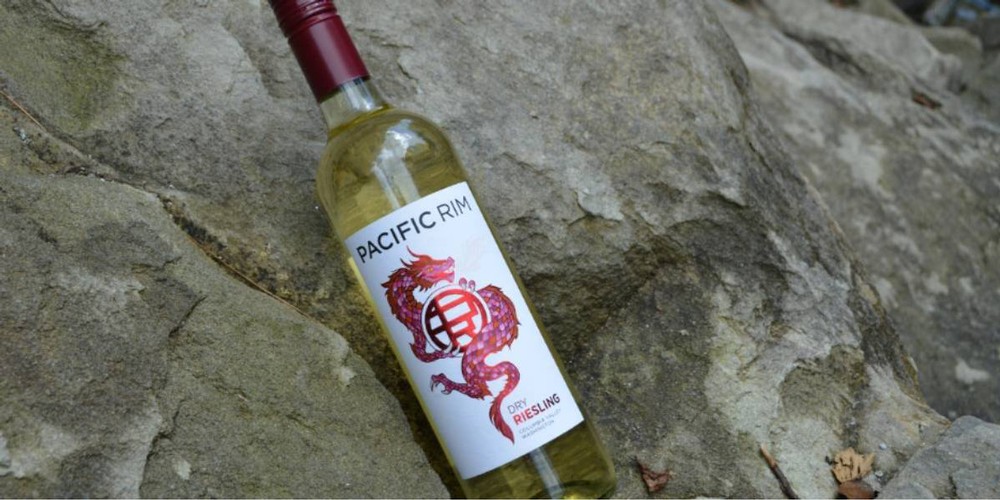
Embracing the Versatility of Dry White Wines
Dry white wines have emerged as a favorite among wine enthusiasts for their crisp and refreshing taste profile. Unlike sweeter varietals, such as dessert wines, dry whites undergo fermentation until most of the grape sugars are converted into alcohol, resulting in a drier finish that appeals to a wide range of palates. This versatility makes dry white wines the perfect accompaniment to a variety of dishes, from delicate seafood to creamy pasta, enhancing the dining experience with their vibrant flavors and food-friendly acidity.
Furthermore, the rise of dry white wines reflects a shift towards lighter, more approachable styles of wine consumption, particularly among younger consumers. With their lower alcohol content and bright, fruit-forward profiles, dry whites offer a refreshing alternative to heavier red wines, making them ideal for casual gatherings, outdoor picnics, and leisurely afternoons with friends. As the demand for lighter, more versatile wines continues to grow, dry white wines are poised to remain a beloved staple in wine culture for years to come.
What Are Dry White Wines: Understanding the Essence
Dry white wines, as the name suggests, are wines that lack perceptible sweetness, offering a crisp and refreshing taste profile. But what sets them apart? What are dry white wines? In essence, dry white wines undergo fermentation until most of the grape sugars are converted into alcohol, resulting in a wine that's notably less sweet compared to its counterparts. This characteristic makes them incredibly versatile, pairing well with various dishes and appealing to a wide range of palates.
The process of making dry white wines involves careful fermentation techniques that allow the natural flavors of the grapes to shine through. By fermenting the grapes until nearly all the sugars are converted into alcohol, winemakers can create a clean and balanced wine that showcases the true essence of the grape varietal. This purity of flavor is what distinguishes dry white wines from their sweeter counterparts, offering a more nuanced drinking experience for discerning palates.
Moreover, the acidity levels in dry white wines play a crucial role in shaping their flavor profile and overall structure. Higher levels of acidity give dry whites their characteristic crispness and brightness, balancing out any residual sweetness and imparting a refreshing finish. Whether it's the zesty acidity of a Sauvignon Blanc or the subtle mineral notes of a Chablis, acidity adds complexity and depth to dry white wines, elevating them to new heights of sophistication and enjoyment.
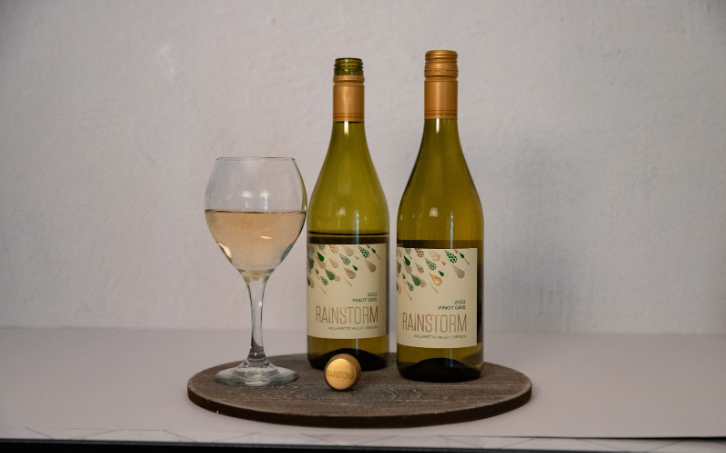
Exploring Dry White Wines: A Palette of Flavors
When it comes to dry white wines, diversity reigns supreme. From the zesty notes of Sauvignon Blanc to the floral aromas of Riesling, each varietal boasts its unique flavor profile. Chardonnay, known for its buttery texture and hints of oak, offers a luxurious experience, while Pinot Grigio entices with its bright acidity and citrus undertones. Whether you prefer a crisp, mineral-driven wine or a fuller-bodied option with complex layers, there's a dry white wine to suit every taste preference.
Exploring the vast array of dry white wines opens a world of sensory delight, where each sip offers a new and exciting experience. Sauvignon Blanc, with its vibrant acidity and tropical fruit flavors, transports the palate to sun-drenched vineyards, while a well-aged Chardonnay unveils layers of complexity, revealing notes of vanilla, toasted almonds, and ripe stone fruits. From the floral elegance of Gewürztraminer to the zesty allure of Albariño, dry white wines offer a kaleidoscope of flavors, inviting wine enthusiasts to embark on a journey of discovery and appreciation.
Furthermore, the influence of terroir on dry white wines adds an extra dimension to their flavor profiles, reflecting the unique characteristics of the regions where they're grown. Whether it's the cool climate of the Loire Valley producing crisp and mineral-driven Sauvignon Blanc or the sun-drenched vineyards of Napa Valley yielding rich and opulent Chardonnays, each region imparts its signature traits onto the wines it produces. This diversity of terroirs ensures that every bottle of dry white wine tells a story, capturing the essence of its origin and inviting consumers to explore the world through their glass.
Origins and Regions: Unveiling Terroir
One of the joys of exploring dry white wines lies in discovering the diverse terroirs that influence their character. From the rolling hills of Burgundy to the sun-kissed vineyards of California, each region imparts its signature traits to the wines it produces. At Pacific Rim & Co., we take pride in showcasing the Pacific Northwest's terroir through our collection of dry white wines, capturing the essence of the region with every sip.
The Pacific Northwest region, with its unique climate and diverse microclimates, offers an ideal environment for growing a variety of grape varietals used in dry white wines. From the crisp acidity of Washington State's Rieslings to the lush fruit flavors of Oregon's Pinot Gris, the Pacific Northwest's terroir shapes the character of our wines, infusing them with a sense of place and identity. By sourcing grapes from sustainable vineyards throughout the region, we're able to showcase the best that the Pacific Northwest has to offer, ensuring that each bottle of Pacific Rim wine reflects the beauty and bounty of our local terroir.
Moreover, the commitment to sustainability in winemaking further enhances the connection between dry white wines and their origins. By adopting eco-friendly practices that preserve the land and promote biodiversity, we're able to safeguard the integrity of our terroir for future generations. From organic farming methods that minimize chemical inputs to water conservation techniques that protect our precious resources, sustainability is at the heart of everything we do at Pacific Rim & Co. By supporting our wines, you're not just indulging in a delightful drinking experience—you're also championing a vision of responsible stewardship and environmental stewardship.
Sustainability in Winemaking: The Pacific Rim Approach
At Pacific Rim & Co., sustainability isn't just a buzzword—it's a way of life. We believe in nurturing the land that sustains us, employing eco-friendly practices that minimize our environmental footprint while producing exceptional wines. From organic farming methods to energy-efficient production techniques, we're committed to preserving the integrity of our ecosystem for generations to come. With each bottle of Pacific Rim wine, you're not just tasting quality—you're supporting a movement towards a more sustainable future.
Our dedication to sustainability extends to every aspect of the winemaking process, from vineyard management to packaging and distribution. By practicing organic farming methods and minimizing the use of synthetic pesticides and fertilizers, we ensure that our vineyards remain healthy and vibrant, fostering biodiversity and soil health. Additionally, our focus on water conservation and recycling allows us to minimize our water usage and reduce our environmental impact, preserving this precious resource for future generations.
Furthermore, our commitment to sustainability extends beyond the vineyard, encompassing every step of the winemaking journey. From the moment the grapes are harvested to the final bottling and labeling process, we strive to minimize waste and maximize efficiency, ensuring that every aspect of our production is as eco-friendly as possible. By using lightweight glass bottles and recycled packaging materials, we reduce our carbon footprint and minimize the environmental impact of our wines. With Pacific Rim & Co., you can enjoy your favorite dry white wines knowing that they're not just delicious—they're also helping to build a more sustainable future for our planet.
The Health Benefits of Dry White Wines: A Toast to Wellness
Beyond their exquisite taste and sustainability credentials, dry white wines also offer a host of health benefits. According to research published in Wine Spectator, moderate consumption of white wine has been linked to improved heart health, thanks to its antioxidant properties and ability to raise HDL (good) cholesterol levels. Additionally, the lower sugar content of dry white wines makes them a diabetic-friendly option, allowing individuals to indulge without compromising their health goals.
The health benefits of dry white wines extend beyond cardiovascular health, with studies suggesting that moderate consumption may also contribute to overall longevity and well-being. The antioxidants found in white wine, such as resveratrol and quercetin, have been shown to possess anti-inflammatory and anti-aging properties, helping to protect against chronic diseases and promote cellular health. Additionally, the moderate alcohol content of dry white wines can promote relaxation and stress reduction, contributing to a more balanced and healthy lifestyle.
Moreover, the lower calorie content of dry white wines compared to their sweeter counterparts makes them a popular choice for individuals looking to maintain a healthy weight or reduce their calorie intake. With fewer residual sugars and lower alcohol levels, dry white wines offer a lighter and more refreshing option for those watching their waistlines. Whether enjoyed on its own or paired with a light meal, a glass of dry white wine can be a guilt-free indulgence that contributes to your overall health and wellness. Cheers to a toast to wellness with Pacific Rim & Co. wines!
Elevate Your Wine Experience with Pacific Rim & Co.
As we conclude our journey through the world of dry white wines, we invite you to elevate your wine experience with Pacific Rim & Co. Discover the perfect balance of elegance, sustainability, and affordability with our exquisite selection of wines, crafted with care and precision. Whether you're a seasoned connoisseur or just beginning your wine exploration, we're here to guide you on a path of discovery and delight. Cheers to dry white wines, and cheers to a brighter, more sustainable future. Click here to explore our collection and embark on your next wine adventure.
Ready to indulge in the allure of dry white wines? Click here to explore our collection and elevate your wine experience with Pacific Rim & Co. For more information about our sustainable practices and regionally-inspired wines, contact us today. Cheers to sustainability, sophistication, and unforgettable moments shared over a glass of fine wine.
What Red Wine Is Sweet?
Wine, often called the elixir of the gods, has been captivating human senses for millennia, with red wine holding a special place in enthusiasts' hearts. But what makes red wine sweet? What red wine is sweet? This blog post delves into the intricate science behind red wine's sweetness, from the vineyards and grape sugars to the fermentation processes. We explore the role of grape varieties, terroir, and winemaking techniques in determining sweetness levels, offering a journey through the spectrum of red wine sweetness. Whether you're a wine connoisseur or simply enjoy a glass of red, join us as we unveil the sweet science behind your favorite beverage. Cheers to the science of savoring!

Unveiling the Sweetness of Red Wines
Is Red Wine Sweet by Nature?
Red wines are renowned for their complex flavors, ranging from dry to sweet. The sweetness in red wine primarily comes from the residual sugar left after the fermentation process. During fermentation, yeast consumes the sugars in grape juice, converting them into alcohol. If the winemaker intentionally stops this process before all the sugars are converted, a sweeter red wine is born.
Understanding the winemaking process is key to appreciating the variety in red wine sweetness. The decision of when to stop fermentation is an art in itself, as it determines the final sweetness of the wine.
The Biochemical Magic of Red Wine Sweetness
Sugar in Grapes: The Starting Point
The journey to understanding red wine sweetness begins in the vineyard, where grapevines cultivate the raw material for winemaking. Grapes are naturally sweet due to the presence of sugars, primarily glucose and fructose, in their juice. These sugars serve as the foundation for the sweetness that will eventually develop in red wines.
Yeast Fermentation: The Sugar-to-Alcohol Transformation
Once the grapes are harvested and crushed, the magic happens in the fermentation process. Yeast, a microorganism naturally present on grape skins or added by winemakers, plays a crucial role. Yeast consumes the sugars in the grape juice and converts them into alcohol through a process called fermentation.
During this phase, glucose and fructose molecules are broken down into ethanol (alcohol) and carbon dioxide. This conversion process is the primary reason why wine contains alcohol. However, not all sugars are consumed during fermentation, which leads to the residual sugar content responsible for sweetness in wine.
The Winemaker's Decision: Stopping Fermentation
The level of sweetness in red wine is ultimately determined by the winemaker's decision on when to halt fermentation. If fermentation is allowed to continue until all sugars are fully converted into alcohol, the result is a dry wine with minimal residual sugar and, hence, little to no sweetness.
Conversely, if a winemaker chooses to stop fermentation before all sugars are transformed, the wine retains some of its natural sweetness. This decision is a delicate balance, and winemakers employ various techniques to achieve their desired level of sweetness.
The Role of Grape Variety
Natural Sugar Levels in Grapes
Not all grape varieties are created equal when it comes to natural sugar levels. Some grapes, like Muscat and Zinfandel, are naturally sweeter due to their higher sugar content. Winemakers often choose these varieties when aiming to produce sweet red wines.
Phenolic Compounds: Flavor and Sweetness
Beyond sugar content, the grape's phenolic compounds, which include tannins and anthocyanins, play a vital role in red wine's sweetness. These compounds contribute to a wine's body, mouthfeel, and overall flavor profile.
Tannins, for instance, can impart a sense of bitterness or astringency, which can balance the sweetness in certain red wines. Anthocyanins, responsible for the wine's color, also contribute to its perceived sweetness. The interplay between these compounds and sugars creates a complex sensory experience that defines the sweetness of red wine.
Region, Climate, and Terroir
The Impact of Terroir
Terroir, a French term encompassing the environmental factors that influence grape growth, can significantly affect the sweetness of red wine. Factors such as soil composition, climate, and elevation play pivotal roles in grape development.
Grapes grown in warmer climates often ripen more fully, leading to higher sugar content. This is why red wines from regions like Napa Valley in California or the Barossa Valley in Australia tend to have a fruitier and sweeter character.
Winemaking Techniques: From Vine to Bottle
Winemakers carefully select and adapt their winemaking techniques to highlight the sweetness inherent in grapes. The choice of fermentation vessels, yeast strains, and aging processes all contribute to the final flavor profile.
For example, oak aging can impart vanilla and caramel notes, enhancing the perception of sweetness even in wines with lower residual sugar levels. The synergy between terroir and winemaking decisions creates the nuanced sweetness that wine enthusiasts savor.
The Spectrum of Sweetness: What Red Wine is Sweet?
Dry to Sweet: A Diverse Range
Red wines span a wide spectrum of sweetness, from bone-dry to lusciously sweet. Understanding where your favorite red wine falls on this spectrum can be a delightful journey of exploration.
Dry Red Wines
Dry red wines, often characterized by their low residual sugar content, include popular varieties like Cabernet Sauvignon, Merlot, and Pinot Noir. These wines showcase the grape's natural flavors without significant sweetness.
Off-Dry Red Wines
Off-dry red wines have a touch of sweetness, offering a harmonious balance between dry and sweet. Examples include Lambrusco and some styles of Zinfandel.
Sweet Red Wines
For those with a sweet tooth, there's a world of sweet red wines to explore. These wines, often considered dessert wines, include:
- Ruby Port: Hailing from Portugal, Ruby Port is a fortified wine with rich sweetness, often enjoyed as a dessert wine.
- Black Muscat: This grape variety produces intensely sweet red wines with flavors of blackberries and rose petals.
- Moscato d'Asti: A lightly sparkling wine from Italy, Moscato d'Asti is famous for its sweet, peachy aroma and flavor.
The Sweetest Red Wine: Tawny Port
If you're on a quest to find the sweetest red wine, you'll likely encounter Tawny Port. This Portuguese wine is renowned for its exceptional sweetness and complex flavors. What makes Tawny Port particularly sweet and unique is its aging process.
Tawny Ports are aged for extended periods, often for several decades, in wooden barrels. During this aging, the wine undergoes oxidation, which concentrates its flavors and sweetness. Tawny Ports are characterized by rich, caramelized notes, dried fruit flavors, and a velvety sweetness that lingers on the palate.
What Is the Sweetest Red Wine?
If you're in search of the sweetest red wine, look no further than the world of dessert wines. These wines are intentionally crafted to be sweet and are often enjoyed after a meal. One standout in the realm of sweet red wines is the legendary Tawny Port. This Portuguese wine is aged for extended periods, allowing it to develop a luscious sweetness and complex flavors of dried fruits, nuts, and caramel. Tawny Port's aging process is a testament to the patience and expertise of winemakers, resulting in a wine that's as rich in history as it is in sweetness.
Pacific Rim & Co.: A Commitment to Quality and Sustainability
At Pacific Rim & Co., we share your passion for high-quality, sustainable wines. Our commitment to environmentally friendly winemaking practices reflects our dedication to capturing the unique essence of the Pacific Northwest region. We believe that sustainability and region-specific focus go hand in hand, creating wines that not only taste exceptional but also reflect the terroir of our region.
Our dedication to sustainability extends to every aspect of our winemaking process, from vineyard management to bottling, ensuring that our wines are not only delicious but also respectful of the environment.
Our Pacific Rim Riesling: A Regionally-Specific Delight
One of our flagship wines, the Pacific Rim Riesling, perfectly embodies our commitment to quality and regional specificity. This refreshing white wine showcases the pristine flavors of the Pacific Northwest, with notes of crisp apples and a hint of sweetness. It's the ideal choice for those who appreciate the balance of sweetness in their wine.
Our Pacific Rim Riesling is a testament to the Pacific Northwest's unique terroir, offering a delightful blend of sweetness and crispness that captures the essence of our region.
Embark on a Sweet Journey through the World of Red Wines
In conclusion, the world of red wines offers a diverse spectrum of sweetness, catering to wine enthusiasts, health-conscious consumers, and those who value regionally-specific, sustainable, and high-quality wines. Whether you prefer a sweet Lambrusco, a rich Tawny Port, or our very own Pacific Rim Riesling, there's a sweet red wine to satisfy your palate.
Exploring the spectrum of red wine sweetness is a journey that allows you to discover your personal preferences and savor the unique characteristics of each wine.
So, the next time you find yourself wondering, "What red wine is sweet?" or "What is the sweetest red wine?" remember that the answer lies in the wonderful diversity of the wine world. If you're ready to explore the sweetness of Pacific Rim & Co. wines, click here to discover more about our exceptional offerings. Cheers to sweet moments and sweet wines!
Taste Like a Pro: The 5 S's of Wine
Are you ready to elevate your wine-tasting experience? Whether you're a wine enthusiast or simply someone who appreciates high-quality, sustainable wines, understanding the 5 S's of wine tasting can take your wine appreciation to the next level. In this blog post, we'll explore what the 5 S's are and how they can help you savor every sip of your favorite Pacific Rim & Co. wines.
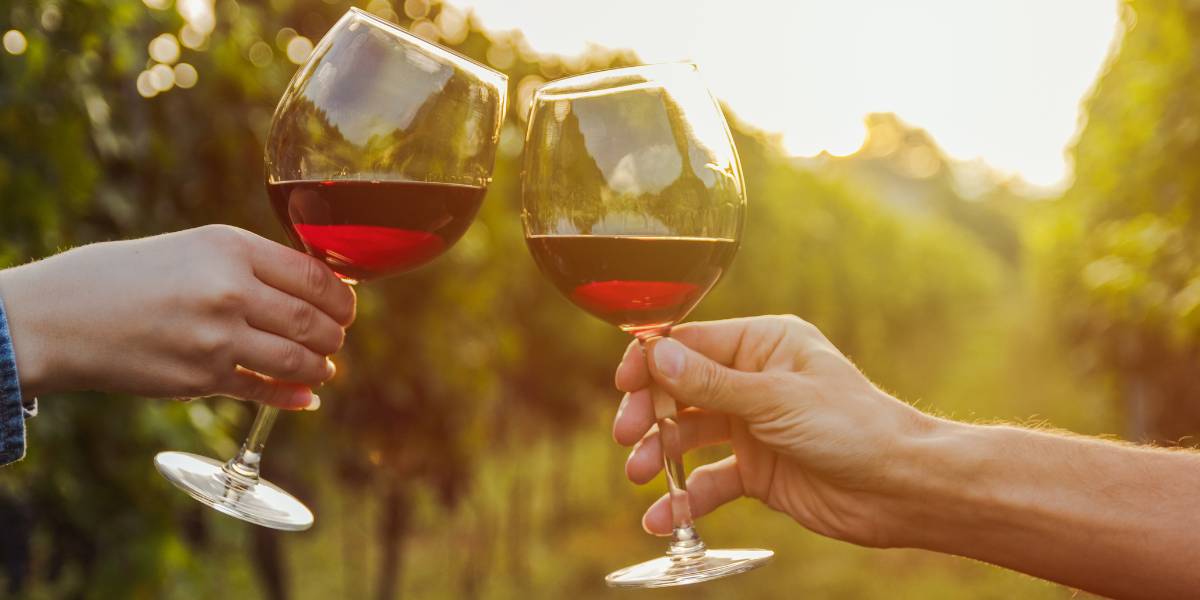
What Does Wine Taste Like?
Before we delve into the 5 S's of wine tasting, let's address a common question: What does wine taste like? The taste of wine is a complex interplay of various factors, including the grape variety, region, winemaking process, and aging. Each wine has its unique profile, but here are some common flavor descriptors you might encounter:
Fruity
Wines often have fruity notes like apples, berries, or citrus fruits. These fruit-forward wines are vibrant and refreshing, making them a delightful choice for those who enjoy the bright and zesty flavors of fresh fruits. If you're a fan of fruity flavors, you might find joy in a glass of Pacific Rim & Co.'s Pinot Gris, with its crisp apple and pear notes.
Herbaceous
Some wines exhibit herbal characteristics like grass or mint. These wines offer a green, herbaceous quality that can be invigorating. If you have a penchant for herbal nuances, consider trying a Sauvignon Blanc, which often features grassy and herbaceous notes, providing a unique and refreshing taste experience.
Spicy
You might detect spices such as pepper or cinnamon in certain wines. These spicy notes can add depth and complexity to your wine-drinking experience. If spice appeals to your palate, a Syrah or Shiraz wine may be your go-to choice. These wines frequently showcase pepper and spice flavors, accompanied by rich berry undertones.
Earthy
Some wines have earthy undertones, reminiscent of mushrooms or soil. These earthy notes create a sense of depth and connection to the land. If you appreciate wines with earthy characteristics, explore Pinot Noir varieties, which often exhibit subtle mushroom and forest floor aromas, creating a sensory journey through the vineyard's terroir.
Oak
If a wine has been aged in oak barrels, you might notice flavors of vanilla, caramel, or toast. These oak-influenced wines have a creamy and comforting quality. Chardonnay is renowned for its affinity with oak aging, resulting in wines that are rich in buttery, vanilla, and toasted oak flavors, making it an ideal choice for those who enjoy a touch of decadence in their wine.
Mineral
Certain wines have a mineral quality, akin to wet stones or chalk. This mineral character adds a sense of purity and elegance to the wine. If you appreciate the unique mineral nuances, consider exploring Riesling wines, which often express a pronounced minerality, creating a crisp and refreshing taste profile that's perfect for pairing with a variety of dishes.
Understanding these flavors can enhance your wine-tasting experience and help you choose wines that align with your preferences. Whether you're drawn to the fruity vibrancy of a Sauvignon Blanc or the earthy complexity of a Pinot Noir, Pacific Rim & Co. offers a diverse range of wines, each with its unique flavor profile, ensuring there's something for every palate. So, the next time you enjoy a Pacific Rim & Co. wine, you can savor it with a deeper appreciation of its distinct flavors and aromas.
Now that you have a sense of what wine can taste like, let's explore the 5 S's of wine tasting, a method that will help you appreciate these flavors and aromas to the fullest.
The 5 S's of Wine Tasting
1. See
The first 'S' stands for "See." Begin by examining the wine's appearance. Pour it into a clear glass and observe its color and clarity. Hold the glass against a white background to better appreciate the hue. Red wines can range from pale ruby to deep garnet, while white wines span from pale straw to golden yellow. The color can provide clues about the wine's age and grape variety.
Why is this important? The color of wine can offer insights into its age and potential flavors. For instance, a young red wine with a vibrant ruby hue might be fresher and fruitier, while an older red wine with a brick-red tint could exhibit more complex, mature characteristics. This visual assessment sets the stage for what you can expect from the wine.
2. Swirl
The second 'S' stands for "Swirl." Gently rotate the glass to allow the wine to breathe and release its aromas. This action also coats the inside of the glass, giving you a preview of the wine's viscosity and texture. Swirling aerates the wine and prepares it for the next step.
Swirling the wine is not just a fancy ritual; it serves a practical purpose. When wine comes into contact with air, it opens up and releases its aromatic compounds. This is why wine enthusiasts often give their glass a gentle swirl before taking a sniff. It's the first step in unlocking the bouquet of scents that will enhance your tasting experience.
3. Sniff
The third 'S' stands for "Sniff." Bring your nose close to the glass and inhale deeply. Take note of the wine's bouquet – the combination of scents that waft from the glass. You might detect fruit, floral, herbal, or even mineral aromas. These fragrances offer insights into the wine's character and complexity.
Your sense of smell plays a significant role in taste perception. Much of what we perceive as taste comes from our olfactory senses. By engaging your sense of smell through sniffing the wine, you're preparing your palate for the flavors to come. The aromas can give you a hint of what to expect when you take that first sip.
4. Sip
The fourth 'S' stands for "Sip." Take a small sip and let the wine spread across your palate. Pay attention to the taste sensations. Is the wine sweet, dry, acidic, or tannic? Notice the flavors that emerge and how they evolve as you savor the wine. Allow your taste buds to explore the full spectrum of flavors.
Sipping wine is the moment of truth. It's where all the elements – the appearance, the aromas, and the anticipation – come together. Your taste buds will pick up on the wine's sweetness, acidity, and other flavor components. You'll experience the wine's texture, whether it's silky, velvety, or grippy due to tannins. This step is where you truly get to know the wine.
5. Savor
The final 'S' stands for "Savor." After swallowing or spitting the wine (if you're at a tasting event), reflect on the overall experience. Consider the wine's balance, finish, and how it makes you feel. A well-crafted wine should leave a lasting impression, and you should appreciate its nuances long after you've tasted it.
Savoring wine is about taking a moment to reflect on your experience. Does the wine linger on your palate, leaving a pleasant aftertaste? Is it well-balanced, with the flavors and acidity harmonizing beautifully? The savoring step allows you to appreciate the craftsmanship that goes into each bottle and leaves you with a lasting memory of the wine.
Conclusion
Incorporating the 5 S's of wine tasting into your wine-drinking ritual can transform your enjoyment of Pacific Rim & Co. wines. Whether you're a seasoned wine enthusiast or just beginning your wine journey, these techniques will help you unlock the hidden flavors and aromas in each bottle. So, why not raise your glass and toast to a richer, more fulfilling wine-tasting experience?
If you're eager to put your newfound knowledge to the test, explore our Pacific Rim Resiling and other fine wines, each crafted with a dedication to sustainability and quality. Take the first step towards a sensory adventure with Pacific Rim & Co., and let the 5 S's of wine tasting be your guide.
Sweet Red Wine: A Sensory Experience
For those who appreciate the nuances of fine wine, prioritize their health, and seek wines that embody regional character and sustainability, prepare for an exquisite experience! This blog post will immerse you in the enchanting realm of sweet red wine, unraveling the secrets that make it an extraordinary sensory adventure. So, go ahead, pour a generous glass of your preferred vino, find a comfortable spot, and join us on this captivating exploration of the world of sweet red wine.
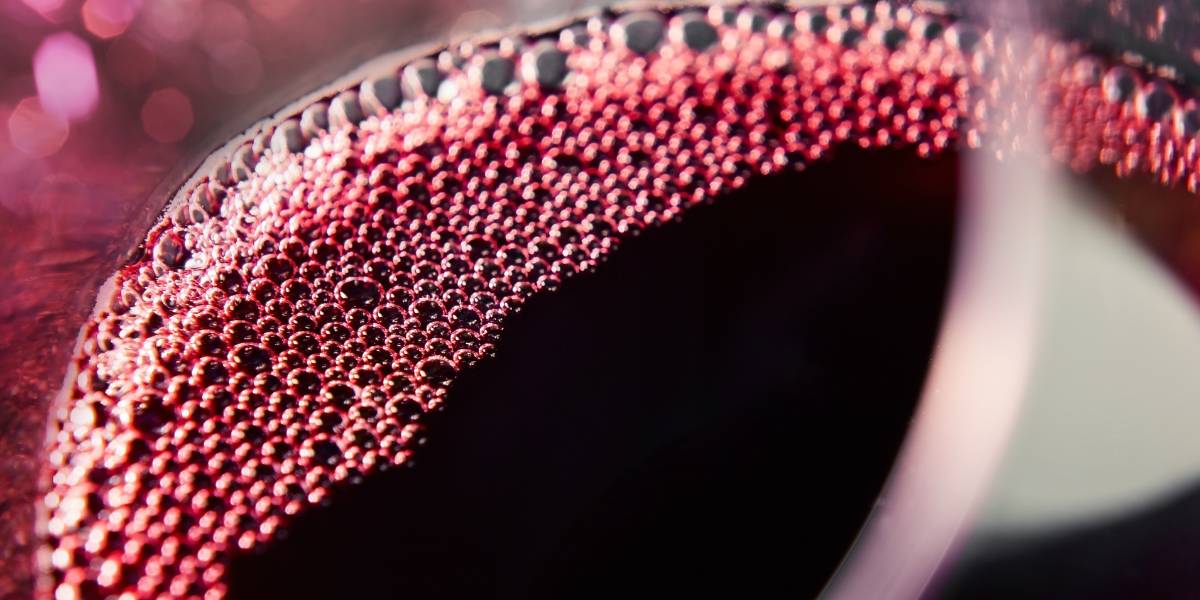
What is a Sweet Red Wine?
Sweet Red Wine - the phrase itself conjures up images of lush vineyards, ripe grapes, and the irresistible aroma of red fruits. But what exactly is a sweet red wine? Let's start by breaking it down.
Red Wine Varieties
Red wines are typically made from dark-colored grape varieties. The color comes from the grape skins, which are left in contact with the juice during fermentation. There's a wide range of red wine varieties, from bold and dry Cabernet Sauvignon to the lighter and fruitier Pinot Noir. Sweet red wines, however, have a distinctive trait – they contain residual sugar, which adds that delightful sweetness.
Red wine varieties are as diverse as the regions they come from. Cabernet Sauvignon, known for its boldness, often carries notes of blackcurrant and cedar, while Pinot Noir, with its lighter body, delights with red fruit and floral aromas. Sweet red wines, on the other hand, take a different path. They preserve the natural sugars of the grapes, providing a pleasant sweetness that complements the rich flavors of the red fruit. This unique characteristic makes sweet red wines a standout choice for those who appreciate a touch of sweetness in their glass.
The Magic of Sweetness
Residual Sugar
So, what is residual sugar, and why does it matter in sweet red wine? Residual sugar is the natural sugar left in wine after the fermentation process. During fermentation, yeast consumes the grape sugars and converts them into alcohol. In sweet wines, fermentation is stopped before all the sugar is converted, leaving behind a sweet taste.
Residual sugar isn't just about sweetness; it's about balance and complexity. The art of winemaking lies in knowing when to stop fermentation to achieve the desired level of sweetness. This careful control results in wines with layers of flavor. The residual sugar enhances the wine's body and can provide a silky mouthfeel, creating a harmonious blend of sweetness and acidity. It's this balance that makes sweet red wines a favorite for pairing with a variety of foods, from savory to sweet dishes.
Flavor Profile
Sweet red wines offer a captivating flavor profile that appeals to a wide range of palates. You'll often encounter notes of ripe berries, cherries, plums, and even hints of chocolate. These wines are like a symphony of flavors dancing on your taste buds.
The flavor journey of sweet red wines is a delight for the senses. Imagine sipping a glass and being greeted by the luscious sweetness of ripe berries, followed by the subtle tartness of cherries and the deep richness of plums. Some sweet red wines even surprise you with a whisper of cocoa, adding complexity to each sip. This orchestra of flavors makes sweet red wines versatile, suitable for savoring on their own or pairing with a wide range of foods, including desserts and savory dishes.
Regions and Sustainability
At Pacific Rim & Co., we're passionate about showcasing the unique essence of the Pacific Northwest region while adhering to sustainable and environmentally friendly winemaking practices. Our commitment to sustainability isn't just a trend; it's a way of life.
Regional Specificity
Each region imparts its distinct characteristics to the wine it produces. In the case of sweet red wines, regions like California, Oregon, and Washington offer the perfect climate and soil conditions for growing the grapes that create these delightful concoctions. The terroir of these regions contributes to the unique flavors and aromas found in Pacific Rim's sweet red wines.
The Pacific Northwest is a treasure trove for winemakers seeking to craft exceptional sweet red wines. The region's cool climate, with its warm, sun-soaked days and crisp nights, allows grapes to ripen slowly, intensifying their flavors. The volcanic soil in parts of Oregon adds mineral nuances, while California's diverse microclimates contribute to a wide array of flavor profiles. When you choose a Pacific Rim sweet red wine, you're experiencing a journey through these remarkable regions, encapsulated in every sip.
Sustainable Practices
We take sustainability seriously because we believe it's our responsibility to protect the environment for future generations. Our winemaking practices focus on reducing waste, conserving water, and minimizing our carbon footprint. By choosing Pacific Rim sweet red wines, you're not only savoring a sensory delight but also supporting eco-friendly winemaking.
Sustainability isn't just a buzzword for us; it's a core value. Our commitment to eco-friendly winemaking extends to every aspect of our production process. We've implemented practices like organic farming, using renewable energy sources, and reducing water usage to minimize our environmental impact. When you enjoy our sweet red wines, you're not only enjoying the fruits of our labor but also contributing to a more sustainable future for the planet.
Health and Budget Conscious
Sweet red wine isn't just a treat for your taste buds; it can also align with your health and budget-conscious lifestyle.
Health Benefits
Moderate consumption of red wine, in general, has been associated with potential health benefits. It's rich in antioxidants, particularly resveratrol, which may have positive effects on heart health. Just remember, moderation is key.
Red wine, including sweet red varieties, has been at the center of numerous studies exploring its potential health benefits. Resveratrol, a compound found in grape skins, has been linked to improved cardiovascular health. Its antioxidant properties may help reduce inflammation and protect against certain chronic diseases. While these potential benefits are promising, it's crucial to enjoy sweet red wine in moderation as part of a balanced lifestyle to fully reap the rewards without excessive alcohol consumption.
Affordable Luxury
Sweet red wines offer an affordable luxury. You can enjoy a glass of these delectable wines without breaking the bank. It's an indulgence that won't leave your wallet crying.
The affordability of sweet red wines is a delightful surprise for wine enthusiasts. Unlike some premium wines that come with a hefty price tag, sweet red wines offer a taste of luxury that fits within various budgets. Whether you're celebrating a special occasion or simply want to unwind after a long day, a bottle of sweet red wine provides an accessible way to elevate your experience without the need for extravagant spending.
Discover the Essence of Sweet Red Wine with Pacific Rim & Co.
In conclusion, sweet red wine is more than just a beverage; it's a sensory experience that takes you on a journey through vineyards, flavors, and regions. At Pacific Rim & Co., we're proud to offer you a selection of sweet red wines that embody the essence of the Pacific Northwest while embracing sustainable practices.
So, what are you waiting for? If you're ready to embark on this delightful journey of taste and sustainability, click here to explore our range of sweet red wines. Cheers to good taste, good health, and a brighter, more sustainable future.
